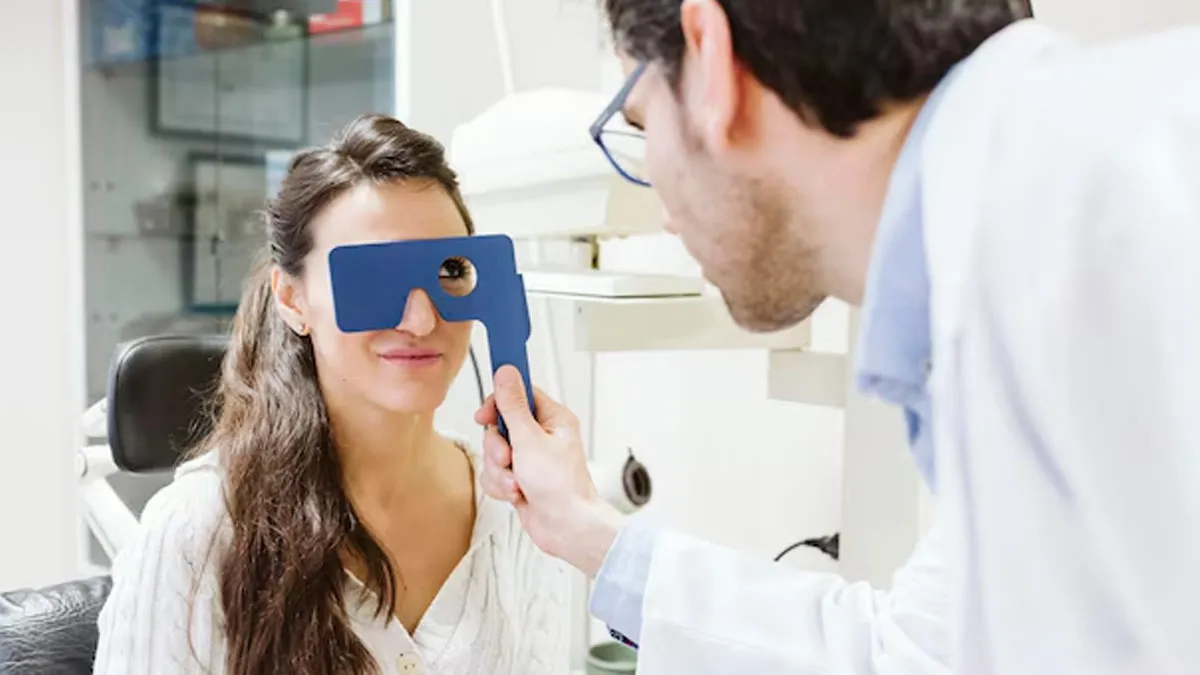
Age is a leading risk factor for cataract, an eye condition that causes a cloudy area in the lens of your eye, making it difficult to see. It is most common in older adults, especially those who are over 60. Around age 40, the proteins in the eye lens start to break down and clump together, making the lens less clear and more rigid. However, while relatively rare, young people can also develop the condition due to several factors.
Table of Content:-
What Is Early-Onset Cataract?

Dr Mubashir Parkar, MBBS, DNB (Ophthalmology), FICO (UK), MRCS (Edinburgh), Cataract, Refractive, LASIK Surgeon, Dr Agarwals Eye Hospital, Vashi, describes early onset cataract as cataract that develops before the age of 50. These are considered atypical and often progress faster than those that occur with ageing, potentially impacting vision significantly earlier in life.
Also Read: Does Our Vision Really Change With Age? Expert Explains
According to the American Academy of Ophthalmology (AAO), more than two lakh children are blind from unoperated cataract, from complications of cataract surgery, or from ocular anomalies associated with cataracts.
Why Genetics And Lifestyle Choices Matter In Influencing Cataract Risk In Young People
Genetic factors and lifestyle habits like smoking, excessive alcohol consumption, poor diet, and lack of Ultraviolet (UV) protection can increase the risk of early cataract development, says Dr Parkar, adding that certain medical conditions, like diabetes, can also contribute to an earlier onset of cataracts.
The AAO suggests that approximately 50% of childhood cataracts are caused by mutations in genes that code for proteins involved in lens structure or clarity.
Moreover, the health body shares that trauma is a major cause of acquired cataracts in children. These are more common in boys and can be the result of penetrating or blunt injuries to the eye.
Screentime To Blame?

With the growing use of phones and laptops, our screen time has gone through the roof. Not just adults, young small kids have become so attached to screen usage. While digital mediums have become one of the primary sources of information and entertainment, it is also a cause of leading eye conditions and diseases, including cataracts. According to Dr Parkar, prolonged exposure to blue light from screens and UV radiation from the sun can contribute to oxidative stress, which damages the eye’s lens.
In fact, a 2024 study published in the Scientific Reports found that people in jobs with high screen time and long sitting hours were more likely to develop ocular diseases like cataracts, retinal detachment, and droopy eyelids (ptosis).
Early Signs Of Cataract To Watch Out For
Symptoms of developing cataracts include:
- Blurry vision
- Difficulty with night vision
- Glare or halos around lights
- Colours appearing faded
- Frequent changes in glass prescriptions
- Finding it harder to drive at night
Also Read: Smoking And Vision Loss: Understanding How It Increases The Risk Of Age-Related Macular Degeneration
How To Reduce The Risk Of Early-Onset Cataract

Early-onset cataracts can sometimes be delayed through lifestyle changes such as wearing UV-blocking sunglasses, eating a healthy diet rich in antioxidants, quitting smoking, managing diabetes, and avoiding excessive alcohol consumption.
Additionally, regular eye exams can also help monitor progression.
Conclusion
Although early-onset cataracts are rare, they can seriously affect vision and quality of life if left unchecked. Fortunately, many of the risk factors—like excess screen time, sun exposure, poor diet, and smoking—are within our control. By making a few simple lifestyle changes and keeping up with regular eye check-ups, especially if there’s a family history of cataracts, young people can take meaningful steps to protect their vision and delay or even prevent the condition.
Also watch this video
How we keep this article up to date:
We work with experts and keep a close eye on the latest in health and wellness. Whenever there is a new research or helpful information, we update our articles with accurate and useful advice.
Current Version